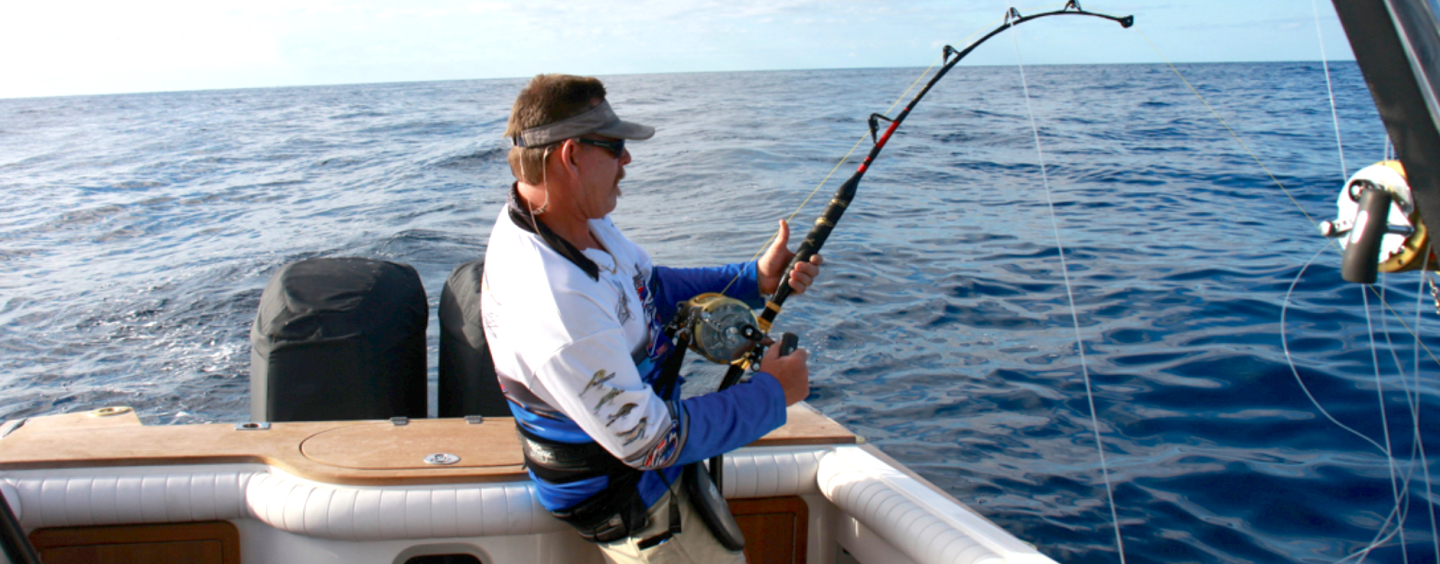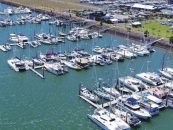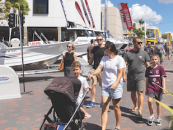The Gold Coast has a climate few other locations can match. With close proximity to freshwater, estuary, and offshore fishing options, the region provides – at times – exceptional fishing. So, it is no surprise that tackle shops are quite popular in the city, and are very reliable sources of technical and local knowledge.
One of the city’s well-regarded tackle shop owners is Kevin Ballantine of Gold Coast Fishing Tackle. In the store, Kevin offers his clients practical advice based on his own fishing experiences. He is an extremely knowledgeable local fisherman and shares with us tips for buying the right equipment, what to expect in the coming months of May to July, and why he enjoys chasing his favourite target, the marlin.
Why do you fish?
One of my motivations to go out fishing is to put into practice what I preach, and of course have a good time. The most satisfying feeling is when customers who are new to fishing take my advice and experience success. Their enthusiasm is definitely contagious to all.
What is the most important consideration in buying fishing gear?
The biggest mistake fishers make when they buy fishing equipment is to simply buy on price without the right advice. Avoid buying anything online unless you are sure the product is capable of doing the job required. Successful fishers utilize proven techniques, so always buy fishing tackle from genuine fishing tackle stores with staff that fish in the area. These people will actually help you catch more fish and help you avoid buying the wrong equipment, which ultimately saves you time and money.
What fish do you expect to catch during the months of May to July?
Blue marlin, yellowfin tuna and snapper. The snapper numbers rapidly increase on the close inshore reef systems from Tweed Heads to the top of Moreton Island. As the water temperature drops and the current slows, the larger fish move in close to feast on squid and baitfish. The wider offshore grounds start around the 140-metre mark and some of the coast’s largest billfish have been caught here. At other times the fish can be anywhere out to a 1,000 metres plus. Tuna schools are commonly seen leaping and crashing through bait schools around the deeper seamount areas.
Equipment to use to catch these fish
For big yellowfin tuna and marlin, an 80-lb line will cover most encounters. Some larger vessels fish only 130lb tackle in the hope of having a chance to land that once-in-a-lifetime monster. Shimano Tiagra game reels rule this environment and their strength and quality is unmatched. T-curve rods and the new Venom rods are my favourites. For the snapper, 8000-size Baitrunners matched to a 7’ venom is a light but powerful combination.
Best strategy and technique for these species.
Without a doubt, floating lightly weighted bait down a berley trail is a deadly method for catching snapper of all sizes. For marlin and tuna, trolling skirted lures is by far the most productive method where covering ground is paramount to locating areas that might hold fish.
Favourite target
It is marlin, for the pure adrenaline rush. Nothing really compares with these fish. They will take a bait barely metres from the transom. They will crash tackle lures from any part of your spread. They are certainly not intimidated by the size of your boat however invincible you think you are. With their availability throughout most of the year, you can realistically chase them and expect results due to the different species (black, blue, and striped) overlapping from spring through to the start of winter.
Most productive areas for marlin
Juvenile black marlin are essentially an inshore species, hugging the coast as they migrate south. Areas that consistently hold bait all year provide the action and these areas are well within the range for small trailer craft.
Striped marlin are the least prolific of our trio, but can turn up in depths anywhere from fifty to a thousand metres and beyond. This species is the only commercially targeted billfish off the coast that pits recreational against pro anglers, but there is minimal conflict.
Blue marlin, like all apex predators go where the food is. If food is in the shallow, that is where blue marlin will be. But this species is normally associated with over the continental shelf deep canyon studded cobalt water. Rough conditions tend to switch these guys on more. With specimens over 800 lbs having been landed and plenty of larger ones that got away, there is plenty of incentive to keep trying.
Tip on purchasing equipment for marlin
Absolutely buy the best you can afford. These fish grow big and gear failure problems can really escalate the situation to a dangerous level. Broken rods and seized reels are common issues with gear not designed for the job.
Best strategy and technique for marlin
First and foremost is to go where these fish normally frequent. Then, run a spread of appropriate sized lures in a variety colours that have proven successful in the past try. Be in an area that looks fishy around tide changes. This could mean a bait school, a water temperature variation, or just a nice current line.
Advice on choosing a fishing boat
When buying a boat, work out what sort of fishing you want to do. If the boat is required to be an all-rounder, then it should be just that – great for estuary, bay, the Broadwater and offshore in good conditions. Your available budget obviously will determine how many extra accessories you can install. Keep safety foremost by knowing the limits and capabilities of your boat in various conditions.
Interview with KEVIN BALLANTINE
Editorial by Andy Kancachian
(May-Aug2017)



























